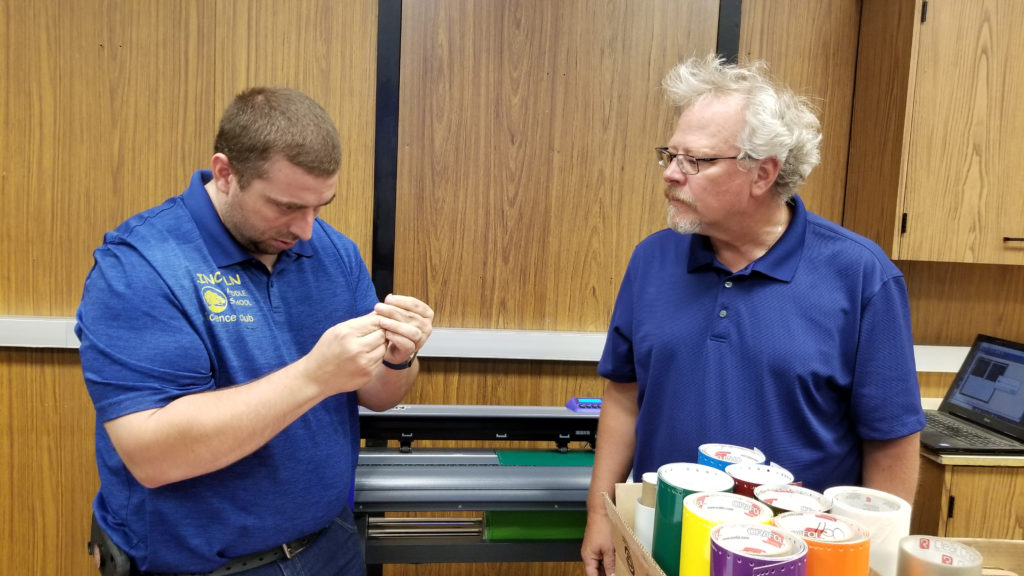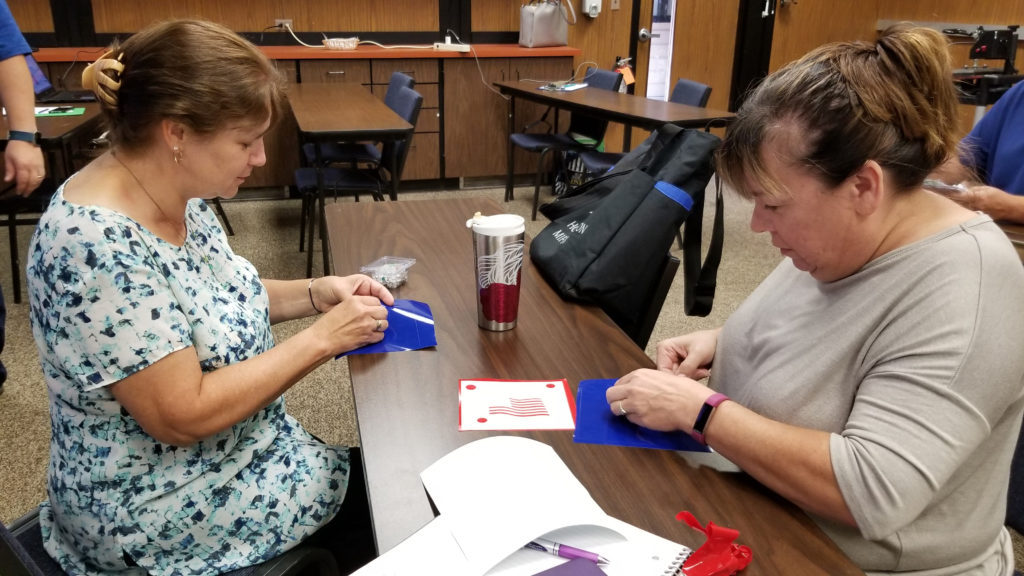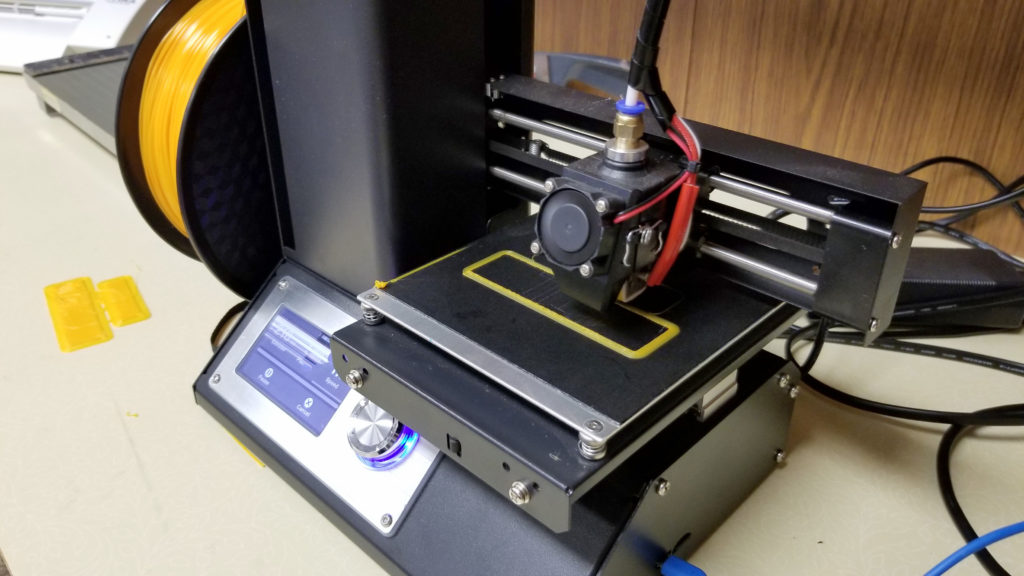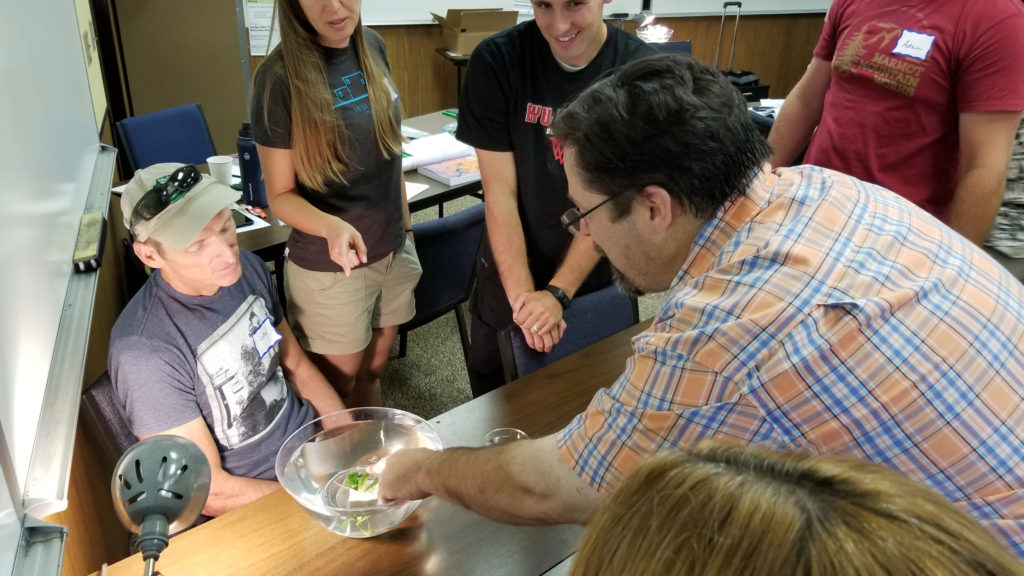Enhancing STEAM teaching
Summer STEAM Institute draws educators looking to engage students through STEAM Thinking
Teachers are always looking for new ways to keep their students engaged in the classroom. And that means educators must continue learning throughout their careers.
Dozens of Douglas County teachers participated in this year’s Summer STEAM Institute organized by the Umpqua Valley STEAM Hub and Douglas County Partners for Student Success. Throughout the week of Aug. 12-15, they took lessons in subjects such as STEAM in Early Childhood; Project Learning Tree curriculum; First Lego League Robotics; and 3D printing. Ultimately, more than 80 educators from 27 different schools and organizations that work directly with children to provide educational experiences participated in the program.
“It’s a teachers’ jobs to prepare students for a future that hasn’t been imagined yet,” said Nick Krissie, science teacher at Lincoln Middle School in Oakland.
Krissie led a class on 3D printing, vinyl cutting and maker spaces. The session provided a basic introduction to digital fabrication, a process used in the engineering industry. Teachers practiced using a 3D printer, which is available for them to check out from the STEAM Hub’s Resource Lending Library.
Kendra Wilson, director of operations at the Boys & Girls Clubs of the Umpqua Valley, said she attended the session to learn about the printer so she would feel comfortable bringing it to the club and designing a lesson around it.
“We use the lending library all year long, it’s a great resource,” she said.
The club works to engage local youth in activities that involve STEAM thinking in hopes of sparking kids’ imaginations and encouraging them to think about their futures and possible careers, Wilson added.
On the same day as the 3D printing class, staff from the Oregon Natural Resources Education Program (ONREP) were teaching teachers about Project Learning Tree curriculum and how to integrate into the classroom.
“The goal, by using the Project Learning Tree curriculum, is to teach teachers how to get kids outside and using their environment, whatever their environment is, for learning about natural resources,” said Debi Lorence with ONREP.
Examining biotic and abiotic systems, ecologies and how humans affect the environment are some of the subjects the curriculum touches on.
“I’m always looking for ways to improve science education for my students,” said Kelli Long, a fifth-grade teacher at Glide Elementary, who participated in the Project Learning Tree session as well as the session Using Story Telling to Teach Science, Geography, History and Art. “Whether we realize it or not, science is a part of every single one of our lives.”
Long said she also participates in the STEAM Institute so that she can help ensure rural students have the same opportunities as those in larger cities.
Gwen Soderberg-Chase, DCPSS and STEAM Hub director, had equity in mind in developing this year’s STEAM Institute theme, “STEAM Thinking for ALL!”
“Our students need to be aware of the choices that exist for them when it comes to their futures,” she said. “Encouraging STEAM thinking isn’t just about focusing on science, technology, engineering and math, it’s about developing the critical thinking skills that will help them be successful regardless of the paths they choose.”
For more information on the Summer STEAM Institute and the Resource Lending Library, visit www.dcpss.org/steam.




Leave a Reply
You must be logged in to post a comment.